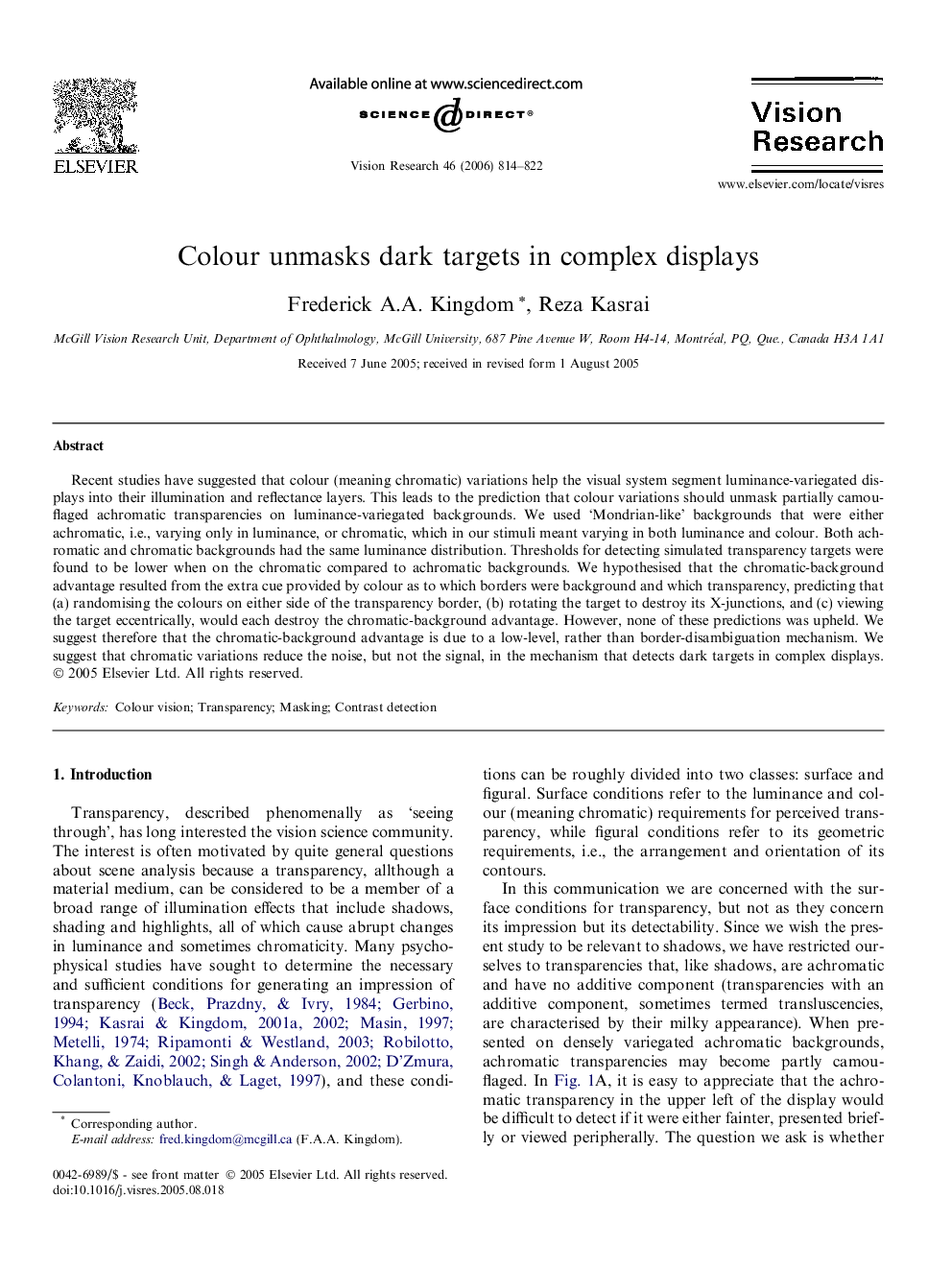| Article ID | Journal | Published Year | Pages | File Type |
|---|---|---|---|---|
| 4036340 | Vision Research | 2006 | 9 Pages |
Abstract
Recent studies have suggested that colour (meaning chromatic) variations help the visual system segment luminance-variegated displays into their illumination and reflectance layers. This leads to the prediction that colour variations should unmask partially camouflaged achromatic transparencies on luminance-variegated backgrounds. We used 'Mondrian-like' backgrounds that were either achromatic, i.e., varying only in luminance, or chromatic, which in our stimuli meant varying in both luminance and colour. Both achromatic and chromatic backgrounds had the same luminance distribution. Thresholds for detecting simulated transparency targets were found to be lower when on the chromatic compared to achromatic backgrounds. We hypothesised that the chromatic-background advantage resulted from the extra cue provided by colour as to which borders were background and which transparency, predicting that (a) randomising the colours on either side of the transparency border, (b) rotating the target to destroy its X-junctions, and (c) viewing the target eccentrically, would each destroy the chromatic-background advantage. However, none of these predictions was upheld. We suggest therefore that the chromatic-background advantage is due to a low-level, rather than border-disambiguation mechanism. We suggest that chromatic variations reduce the noise, but not the signal, in the mechanism that detects dark targets in complex displays.
Related Topics
Life Sciences
Neuroscience
Sensory Systems
Authors
Frederick A.A. Kingdom, Reza Kasrai,
